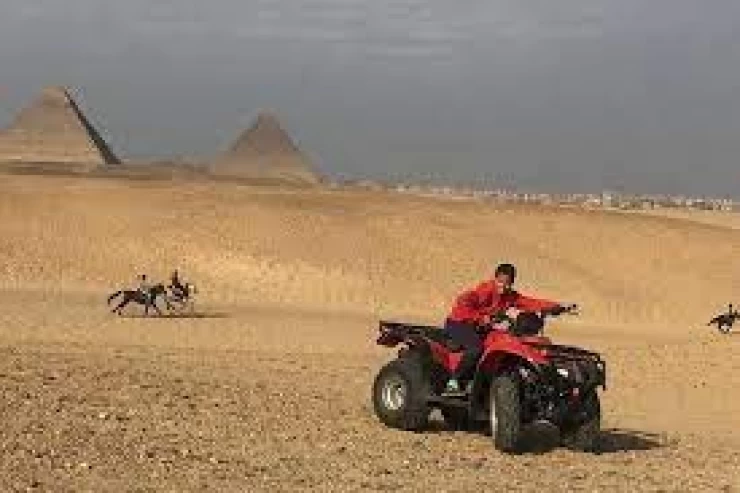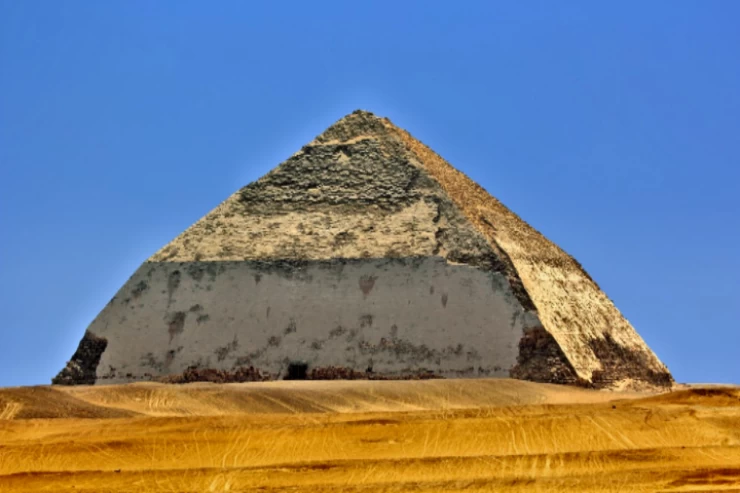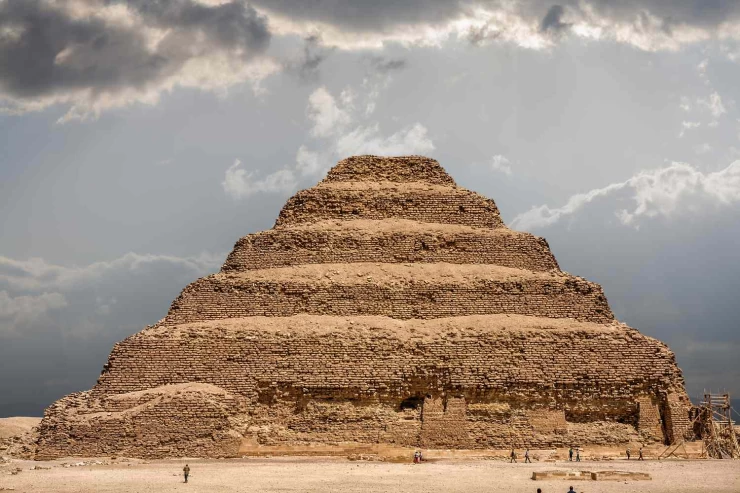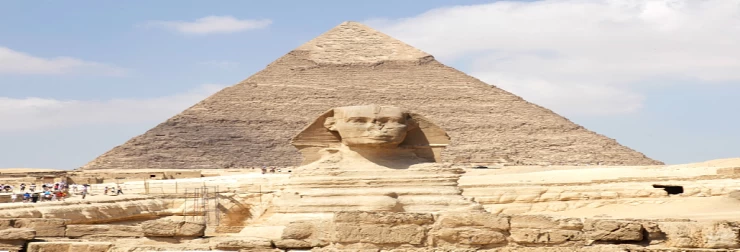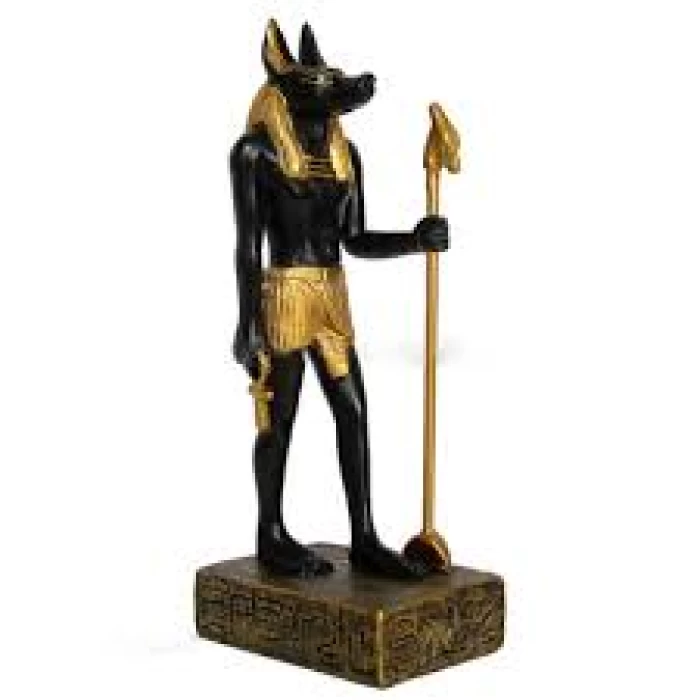
Deus Anubis | Deus da Necrópole
Deus Anubis
Anubis era conhecido como o deus do submundo mas mais tarde tornou-se associado ao processo de mumificação e às procissões fúnebres.
O seu nome foi alterado e ficou então conhecido como "Imy-ut" (Aquele que está no lugar do embalsamamento), nub-ta-Djoser (senhor da terra sagrada).
Deus da Necrópole
Preservar o corpo da pessoa morta era uma das crenças egípcias antigas, por isso mumificavam os seus mortos, Anubis era o deus mumificado.
Anubis tinha um ponto negro que o representava como o deus dos mortos. A forma humana plena de Anúbis podia ser vista no Templo de Ramsés II, em Abydos. Anubis também tem uma bela estátua sobre o seu nome, feita sob a forma de um chacal que foi encontrado no Túmulo de Tutankhamen, descoberta pelo famoso escavador Howard Carter na necrópole do novo reino conhecida como o Vale dos Reis na Cisjordânia do Rio Nilo, e agora exposta na colecção do Museu Egípcio no Cairo.
Podemos ver muitas orações e rituais dedicados a Anúbis gravados em muitos túmulos antigos do Egipto. Observou o processo de mumificação dos mortos para garantir que era adequado. Acompanhou as almas do submundo enquanto examinava os seus conhecimentos sobre os deuses e a sua fé. Colocou o coração dos mortos na balança da justiça quando se realizou o julgamento do coração.
Viajou ao Egipto para visitar os templos e pirâmides egípcios para aprender mais sobre a mitologia e centenas de deuses adorados pelos Faraós, que eram muito parecidos com os humanos que amavam e odiavam, sentiram ciúmes e lutaram e morreram durante um mito surpreendente cheio de alegria, acção e acontecimentos dramáticos que inspiraram os realizadores e produtores de cinema modernos a criar filmes mundialmente famosos sobre a grandeza dos Faraós e dos Deuses que adoravam. Passe alguns dias para visitar Abydos, Giza, Luxor, Assuão para ver os túmulos dos Faraós adornados com cenas muito claras, detalhadas e belamente pintadas das várias divindades do antigo Egipto, bem como muitos outros locais, cidades, aventuras, e coisas para fazer no Cairo, pode tentar reservar um dos nossos pacotes de viagens ao Egipto e muitos grupos privados de excursões guiadas de um dia no Cairo a partir do aeroporto e de um dia no Egipto para explorar a capital do Egipto, Cairo pode verificar muitos dos itinerários do Egipto ou fazer uma das nossas excursões completas do Dia do Cairo, como por exemplo:
Ancient Egypt boasted many great monuments and left us a cultural legacy unparalleled among other civilizations, one that we are still proud of and distinguished by to this day.
One of the hallmarks of ancient Egypt's greatness was its recognition of the one god, its sanctification of him, and its devotion to him, offering sacrifices to him. Not only that, but its loyalty to the god extended to the construction of temples and the inscription of his symbols on walls. The god was represented in animals, plants, and birds, and was considered a symbol of the goodness that God bestowed upon the people of Egypt.
The title of god given to these sanctuaries was not intended to refer to the supreme god, the creator of the universe. Rather, it was a specific god associated with a specific aspect of life, such as agriculture, rain, life and death, the Nile, air, and fertility...Anubis, the ancient Egyptian deity of the dead, tombs, and mummification, is the most well-known of these gods.
Reason for his sanctification: The ancient Egyptians took Anubis as their god, seeing him as the archenemy of the dead, as he would dig up graves and tamper with the bodies of the dead. This was the reason behind his sanctification as the lord of the dead and protector of cemeteries, in order to ward off his evil.
Anubis was known as the god of the underworld but later he became associated with the mummification process and the funeral processions. His name was changed and he was then known as "Imy-ut" (He Who is In the Place of Embalming), nub-ta-Djoser (lord of the sacred land). Preserving the body of the dead person was one of the ancient Egyptian beliefs that's why they mummified their dead, Anubis was the mummified god.
The head of a jackal, an animal connected to graveyards and death, is frequently used to represent Anubis. This relationship was probably prompted by the ancient Egyptians' observations of jackals wandering near cemeteries. The presence of the jackal represented Anubis' function as a guardian of the deceased... Anubis, the symbol of judgment and balance, is the funerary symbol embodied in the image of a black animal from the wolf family (jackal).
The titles and names of this god are: "Leader of the Westerners" and "Leader of the Dead." Lord of the ancient Abydos necropolis. He takes the dog. From the end of the Old Kingdom, it became a title for the god Osiris after being merged with him.
The jackal is the sacred animal of the gods Wewawet and Anubis, the god of embalming.
The jackal, or wolf, led the deceased into the afterlife, sometimes taking the form of an animal (jackal). He was considered a great funerary god, and temples were dedicated to his worship in Middle Egypt, in a city the Greeks called Kenopoas, meaning "City of Dogs."
Anubis assumed various roles in different contexts. He was depicted as a protector of tombs as early as the First Dynasty (c. 3100 - c. 2890 BC). Anubis was also responsible for mummification. By the Middle Kingdom (c. 2055 - c. 1650 BC), he had been replaced by Osiris in his role as lord of the underworld. One of his most prominent roles was as a guide of souls into the afterlife.
We can see a lot of prayers and rituals dedicated to Anubis carved on many ancient tombs in Egypt. He watched the process of mummification of the dead to ensure it was proper. He accompanied the souls of the underworld while examining their knowledge of the gods and their faith. He placed the heart of the dead on the scales of justice when the judging of the heart took place.
Birth: He was the fourth son of the god "Ra". It was also believed that the god Anubis was the son of the goddess Nephthys and the god Osiris, after Nephthys, the wife of the god Set, fell in love with Osiris, the husband of Isis, and appeared to him in the form of his wife and became pregnant with Anubis. However, she was afraid of the god Set, so she abandoned Anubis. However, when Isis found out about the matter, she adopted him, and he later helped her in mummifying the god Osiris.







